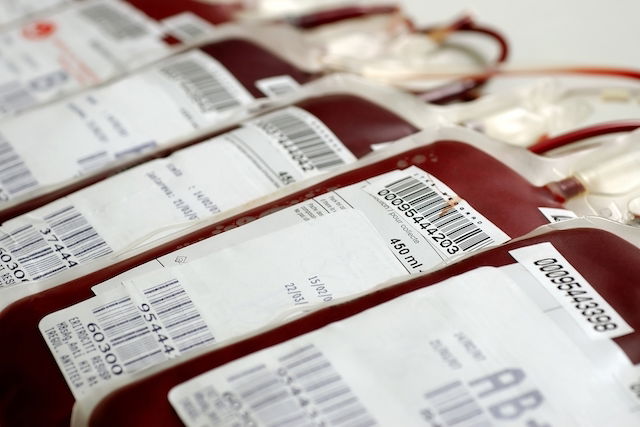A blood transfusion is a medical procedure in which donated whole blood or only some of its constituents are administered intravenously into a patient's body in order to treat a health condition like severe anemia or heavy hemorrhages. A blood transfusion may also be indicated in cases of hemophilia, to treat burns or used during major surgeries.
A whole blood transfusion is common to treat severe bleeding with low hemoglobin levels, but the doctor may also opt to order a transfusion of only certain components of the blood, like the erythrocytes, plasma or platelets. In some cases, it may be necessary to perform several blood transfusions, sometimes back to back, until the body has restabilized.
For certain cases, like a pre-scheduled surgeru, it is possible to perform an autologous transfusion, which involves removing blood from the patient to reinject in during the surgical procedure if necessary.

When it's indicated
A blood transfusion can only be performed when the blood type between the donor and the patient is compatible. The procedure is indicated in situations that involve a massive loss of blood or fluids, or if there are any abnormalities in the production of blood cells or other blood components (like coagulation factors).
A blood transfusion may be ordered to treat:
- Severe anemia
- Severe hemorrhages
- Third-degree burns
- Hemophilia
- After a bone marrow or organ transplant
- During surgical procedures, when there is severe hemorrhage.
However, before the transfusion is performed, it is necessary to ensure that the blood recipient and blood donor are type-compatible. Learn more about the blood types and which are compatible with each other.
How it's performed
Prior to initiating a blood transfusion, a blood sample is first taken to check the recipient's blood type, current blood volume and blood counts, as this can help to guide how many bags may be needed, and whether whole blood or just some components are needed.
A blood transfusion can take up to 3 hours to complete, depending on the quantity of blood needed and also the component that will be transfused. For example, a red blood cell transfusion can take longer because it must be done very slowly and is given in a larger volume, while plasma, despite being thicker, is generally needed in smaller quantities and can take less time.
Having a blood transfusion is not painful, and can even be done during a meal, or while talking, reading or listening to music.
Contraindications for a transfusion
Some patients have beliefs or practice religions that prohibit blood transfusions, as is the case with Jehovah's Witnesses. Instead, these patients may may opt for an autotransfusion, particularly in cases of pre-scheduled surgeries, in which blood is taken from the person before surgery so that it can later be used during the procedure.
Possible risks
Blood transfusions are generally safe and the risk of contracting AIDS or hepatitis is greatly reduced, as all donated blood undergoes vigorous testing to ensure safety. However, in rare cases, some patients may experience allergic reactions, pulmonary edema, heart failure or abnormal potassium levels. For this reason, transfusions should be performed in a hospital setting with continuous monitoring of a medical team.






























